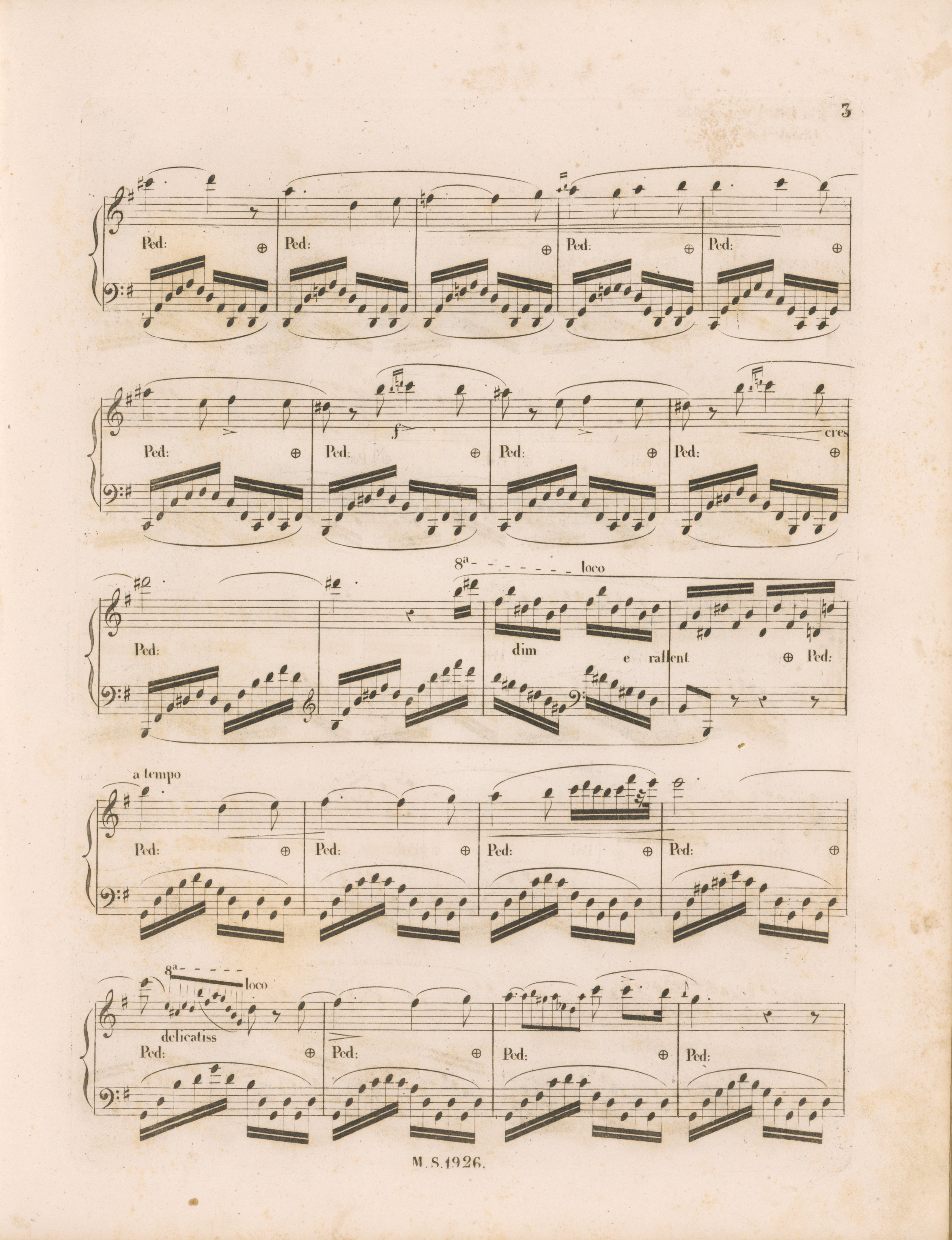




|
||

|
Quintuplet in GE |
|

|
Quintuplet suggested by the editors |
|

|
Septuplet, our alternative suggestion |
The missing digit marking the kind of irregular group Chopin had in mind makes us think of various groupings of the semiquavers, out of which two are much more likely than the others:
- a homogeneous group, i.e. a septuplet. It is a default interpretation in the face of the absence of indications to use other grouping;
- a heterogeneous group, in which the first 5 notes constitute a quintuplet. Such a grouping is supported by an identically built figure in b. 15, marked by Chopin in this way.
The layout of this group against the L.H. semiquavers also does not help us dissipate the doubts. It points rather to a septuplet, yet it is inaccurate, whereas FE are completely unreliable in this respect – in analogous b. 15 the layout of the L.H. part is completely erroneous, cf. also b. 43.
According to us, the latter is much more likely. In a live performance, the difference between both divisions is negligible, and it is difficult to assume that Chopin would have considered such an imperceptible difference at all, and on top of that making the performer guess it. Therefore, in the main text we add a quintuplet marking; such a solution was indicated already in GE. We suggest the version with septuplet as an alternative one.
Compare the passage in the sources »
category imprint: Interpretations within context; Differences between sources
issues: Inaccuracies in FE, GE revisions
notation: Rhythm

